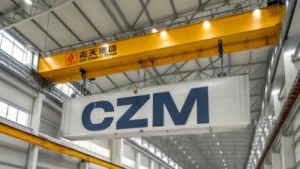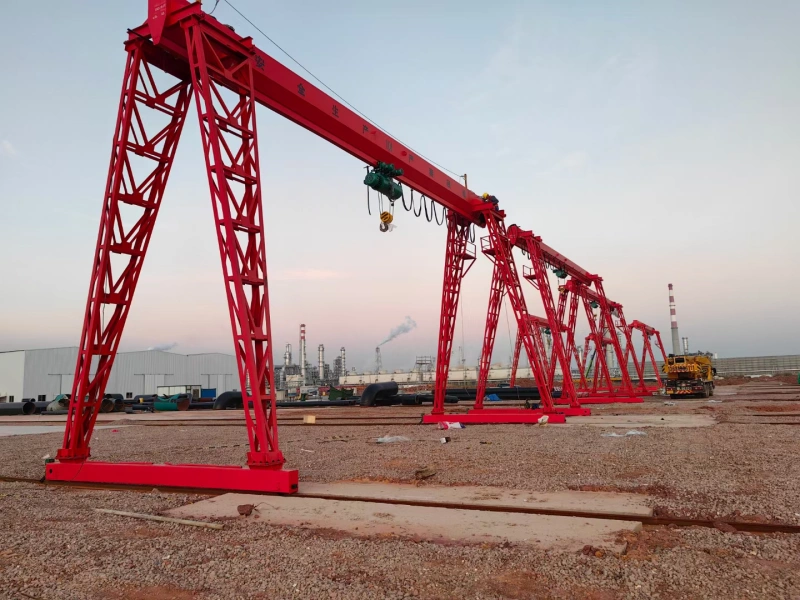
Newbie’s Guide: First Time Buying a Crane? Here’s What You Must Know!
July 1, 2025 by [email protected]
Newbie's Guide: First Time Buying a Crane? Here's What You Must Know!
leading paragraph:
Buying a crane? It's more than just picking a big machine. Mess up, and your project is stuck. Read on for the must-know tips.
snippet paragraph:
Choosing the right crane involves understanding your project needs, the different types available, and key performance parameters. Budget considerations, brand reputation, safety regulations, and purchase channels also play vital roles. This guide helps first-time buyers make informed decisions.
Transition Paragraph:
Okay, so you're ready to buy a crane. But where do you even start? Keep reading, and I'll walk you through the key things.
Define Your Core Needs: Why Do You Need a Crane?
leading paragraph:
Before you even look, know why you need a crane. It's like planning a trip. Where are you going?
snippet paragraph:
Understanding your specific needs is the most crucial step. Consider your project type and scale, frequency of lifting operations, maximum lifting weight and height, and the operating site environment. These factors will guide your crane selection.
Dive deeper Paragraph:
Think about the type of project. Are you building a bridge, working on a small building, or just moving stuff around? The scale of the project matters. A small job needs a small crane. A big job needs a big crane. How often will you lift things? Every day? Once a month? This changes what kind of crane you need. What's the heaviest thing you will lift? How high does it need to go? Write these numbers down. Indoors or outdoors? Rough ground or smooth? All these things change the crane you will pick. Getting clear on these things upfront makes the whole process smoother.
Crane Types Unpacked: Which One Suits You?
leading paragraph:
Cranes come in all shapes and sizes. Picking the right one is key. It's like picking the right tool for the job.
snippet paragraph:
The market offers diverse cranes, each with unique advantages. Truck-mounted cranes offer mobility, crawler cranes provide stability, tower cranes excel in height, all-terrain cranes balance mobility and capability, bridge/gantry cranes suit indoor use, and loader cranes combine transport and lifting.
Dive deeper Paragraph:
Truck cranes move fast. They set up quick. But they don't lift as much as other cranes. Crawler cranes are strong. They work on bad ground. But they are slow to move between jobs. Tower cranes build tall buildings. They reach high. But they take time to set up and take down. All-terrain cranes are good all-around. They drive on roads and work on job sites. Bridge cranes work in factories. They lift things up and down. Loader cranes carry things on a truck and lift them off. Think about your needs and then pick the right crane type.
To help you visualize which crane suits your project best, here's a simple table:
| Crane Type | Ideal Applications | Advantages | Disadvantages |
|---|---|---|---|
| Truck-Mounted Cranes | Projects with frequent site transfers | High mobility, quick setup | Lower lifting capacity compared to crawler cranes |
| Crawler Cranes | Uneven or soft ground, heavy loads | Excellent stability, strong lifting capacity | Slower to move, requires disassembly for transport |
| Tower Cranes | High-rise construction | Great lifting height, extensive working range | Complex setup and dismantling |
| All-Terrain Cranes | Versatile projects needing road travel and job site work | High mobility, strong lifting capabilities, good performance on job sites | Can be more expensive than other options |
| Bridge/Gantry Cranes | Indoor material handling | Efficient horizontal and vertical movement within a defined area | Limited to fixed rails |
| Loader Cranes | Smaller lifting tasks, short-distance hauling | Combines transport and lifting, flexible | Limited lifting capacity and reach compared to dedicated lifting cranes |
Key Performance Parameters Explained: Understand These, Be an Expert!
leading paragraph:
Crane numbers can be confusing. What does it all mean? Knowing these numbers helps you pick the right crane.
snippet paragraph:
Key parameters include rated load (maximum safe lifting weight), maximum lifting height, crane span (for bridge cranes), maximum working radius (outreach), lifting moment (overall lifting power), and engine power/fuel efficiency. Understanding these helps you evaluate crane specifications.
Dive deeper Paragraph:
Rated load is the most weight the crane can lift safely. Don't go over this number. Lifting height is how high the crane can lift things. Span is how wide a bridge crane is. Radius is how far the crane can reach. Lifting moment is how strong the crane is overall. Engine power matters for mobile cranes. More power means faster lifting. Fuel use affects how much it costs to run the crane. Know these numbers so you pick the right crane for your job. Ignoring these parameters can lead to project delays or, worse, accidents.
Budget and Cost Considerations: Beyond the Purchase Price, What Else?
leading paragraph:
A crane costs more than just the price tag. Think about all the costs before you buy. It's like buying a car.
snippet paragraph:
Beyond the initial price, consider transportation, installation, maintenance, fuel, repairs, insurance, operator training, and depreciation. These hidden costs can significantly impact your overall budget.
Dive deeper Paragraph:
The crane itself is just the start. You have to get it to the job site. This costs money. Setting it up costs money. Keeping it running costs money. Fixing it costs money. Insurance costs money. Training your workers costs money. The crane loses value over time. All these things add up. Don't just look at the price tag. Think about the whole cost of owning the crane. This helps you plan your budget better and avoid surprises. Failing to account for these hidden costs can lead to financial strain and project delays.
Brand and After-Sales Service: Choose a Trusted Partner
leading paragraph:
The brand matters when buying a crane. A good brand helps you down the road. It's like buying a phone.
snippet paragraph:
Choose a brand with a good reputation, reliable products, a strong after-sales service network, readily available spare parts, and comprehensive technical support and training. This partnership is crucial for your crane's operational lifespan.
Dive deeper Paragraph:
A good brand means the crane is built well. It means the company will help you if something goes wrong. They will have parts when you need them. They will train your workers. Look for a brand that people trust. Read reviews. Ask around. Make sure they have a good service network. This means they can fix your crane quickly if it breaks down. Spare parts should be easy to get. Training is important so your workers know how to use the crane safely. A good brand is a partner, not just a seller.
Laws, Regulations, and Safety Certifications: Compliance is the Baseline!
leading paragraph:
Cranes have rules. You must follow the rules. It's like driving a car.
snippet paragraph:
Compliance with laws and regulations is essential. Ensure the crane has necessary certifications, register it with authorities, use qualified operators, and conduct regular safety inspections. Compliance ensures safe operation and avoids legal penalties.
Dive deeper Paragraph:
Cranes are special equipment. They need to be certified. This means they meet safety rules. You need to register the crane with the government. Only trained people can use the crane. They need a special license. You need to check the crane regularly. This makes sure it is still safe to use. Following these rules keeps everyone safe and keeps you out of trouble with the law. Ignoring these regulations can lead to severe accidents and legal repercussions.
Purchase Channels and Considerations: Where to Buy? How to Buy?
leading paragraph:
Where you buy your crane matters. It's like picking a store. Do you trust them?
snippet paragraph:
Consider buying directly from the manufacturer, through authorized dealers, or in the used market. Review contractual agreements, conduct pre-purchase inspections, and ask for demonstrations. These steps ensure a smooth transaction and a reliable purchase.
Dive deeper Paragraph:
Buying from the maker is good. You get the newest crane. You get help right from the source. Buying from a dealer can be easier. They are closer to you. But make sure they are real dealers. Buying used can save money. But be careful. Check the crane well. Have someone look at it for you. Read the contract closely. Make sure you know what you are buying. If you can, see the crane in person before you buy it. Buying a crane is a big deal. Do your homework.
Conclusion
Buying a crane? It's a big step. Do your research, ask questions, and pick the right crane for your job.
You may also be interested in:
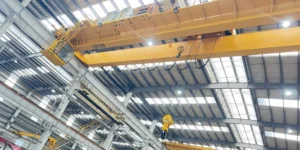
What are the different Types of Cranes?
What are the different Types of Cranes? As industries continue to advance, cranes are seeing increasingly widespread use across various sectors. Different types of cranes, with their unique structures and
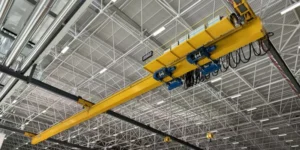
Characteristics of an Excellent Crane
A good crane usually needs to possess the following characteristics: Safe and Reliable: It is equipped with complete safety protection devices, such as overload protection, limit protection, anti-collision devices,
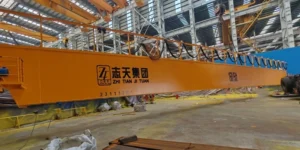
How to Choose Factory Cranes?
Factory Crane Selection and Solution Proposal: Tailoring Efficient and Safe Lifting Solutions for Your Facility I. Introduction: Embark on Your Smart Lifting Journey 1.1 Why Does Your Factory Need the
